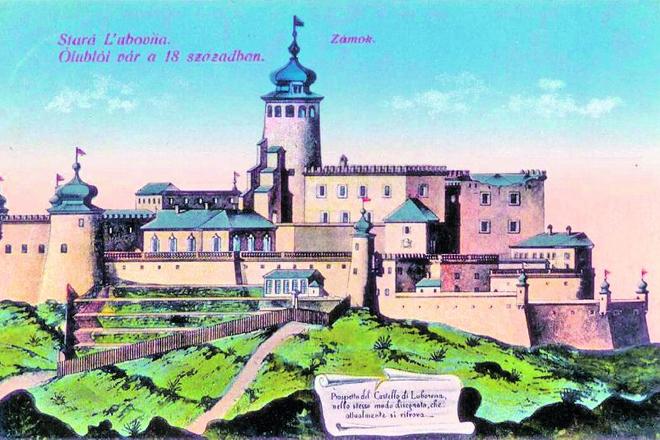THE CASTLE of Ľubovňa holds a special place among its fellow Slovaks. Its fate turned out in such a way that, although it was built initially as a guardian castle on the Great-Hungarian-Polish border and was meant, of course, to protect the interest of the Hungarian Empire, in the end it served Poland for several centuries.
But let us start at the beginning. The fortress was built within a complex of fortifications on the northern border. Ľubovňa was meant to protect Great Hungary.
The old castle, or Stará Ľubovňa, as the structure was called by contemporaries, fulfilled its original function until 1412. That year, the Hungarian King and Holy Roman Emperor, Sigismund of Luxembourg, met here with the Grand Duke of Lithuania and the Polish King Jogaila, or Wladyslaw II Jagiello, to sign an agreement on mutual cooperation. Concurrently with the negotiations, the kings and their numerous entourages enjoyed opulent receptions and sumptuous tournaments, which may be why the castle, very well-equipped for its time, appealed to Wladyslaw. Sigismund skilfully took advantage of this fact; the otherwise prudent emperor led a long and basically unreasonable war against Venice, which was practically unbeatable at the time. He could not procure enough money for this very expensive enterprise, and so he borrowed a huge sum from the Polish king, giving 13 Spiš-region towns as a trade-off, including the towns of Stará Ľubovňa, Podolínec, Hniezdne, and also Ľubovňa Castle.
Ľubovňa and its vicinity never became Polish territory, but it served our northern neighbours well. Castle administrators collected fees in the adjacent border region which went to the treasury of the Polish state. Moreover, this fortress served as an outpost bastion of Polish power.
Maybe it was due to this advantageous opportunity to monitor events in Hungary that the Polish were for a long time reluctant to return the castle. The fact that Sigismund’s coffers were empty and he was not able to cover the debt also contributed to the castle remaining in Polish hands for 360 long years. Only in 1772 did Maria Theresa manage to regain Ľubovňa.
We can see the castle in this mid-18th century drawing by the Italian architect Francesco Placidi. The postcard itself dates back to 1925.


